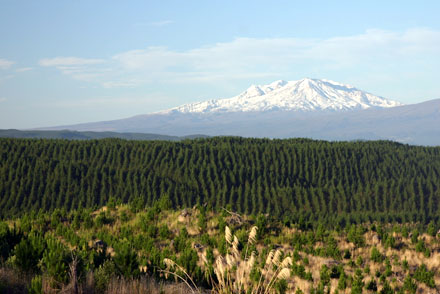
The inclusion of the UN’s Reducing Emissions from Deforestation and forest Degradation program, known as REDD+, as a standalone article in the Paris Climate Agreement was widely hailed as an encouraging political signal that protecting forests and other valuable carbon sinks would henceforth be a key strategy for combating global warming. Source: Mongabay
For REDD+ to truly work, however, countries and companies would need to supply adequate financing to the program, which was a major issue left unanswered by negotiators in Paris.
After more than a decade of REDD initiatives, large-scale financing hadn’t yet materialized. But there are signs that could be starting to change.
Last year, governments and companies around the world committed a record US$888 million in new funding to projects aimed at keeping forests and other carbon-absorbing landscapes intact, according to a new report released by Forest Trends Ecosystem Marketplace initiative.
Those funds will remove the equivalent of 87.9 million metric tons of CO2 from the atmosphere, roughly equal to the annual emissions of Chile, the Washington, D.C.-based NGO said in a statement accompanying the release of the report.
Not all of those funds went directly through REDD+ programs, however.
Another article in the Paris Climate Agreement sets out the framework for “collaborative approaches” in order to allow for the use of carbon markets, many of which are voluntary markets that can be entered into by entities looking to offset the emissions of their operations.
Other markets are compulsory, such as the compliance markets established in New Zealand and the US state of California.
Some $173 million in new forest finance flowed through the world’s carbon markets in 2015, the report states, including US$88 million on the international voluntary market as well as US$10 million and US$63 million brought in by the compliance markets in New Zealand and California, respectively.
The Australian government sold another US$588 million in offsets through its “semi-market” Emissions Reduction Fund, Forest Trends found.
Governments and multilateral institutions committed another US$126 million in non-market payments contingent on veritable results through another approach known as “payments for performance.”
Though climate finace to protect forests hit a new high last year, Forest Trends notes that finance flows continue to fall short of what is needed.
Deforestation is responsible for three billion metric tons of CO2 emissions every year, which represents 8% of the annual carbon budget that the Paris Agreement allocates for the entire world in 2030 — “a daunting number in the face of a growing global population and rapidly developing economies,” the group said.
Nonetheless, Michael Jenkins, president and CEO of Forest Trends, says that recent developments could signal a possible turning point in the scale of forest carbon finance.
“Our data indicate that forest carbon projects are protecting 28 million hectares of forest,” Jenkins writes in the report. “Historically, sales of emissions reductions have occurred mostly in ‘voluntary’ markets, but also in ‘compliance’ markets, and increasingly in non-market ‘payments for performance.’
“Taken together, these finance channels resulted in nearly US$900 million in new payments for forest-based emissions reductions in 2015.”
Forest Trends’ Ecosystem Marketplace has tracked a collective $6 billion in forest carbon finance committed by companies, governments, individuals, and multilateral institutions since 2009.
Eighty-seven of the 197 parties to the UN Framework Convention on Climate Change have now ratified the Paris Climate Agreement, which is set to enter into force on 4 November, just 11 months after it was adopted — way ahead of schedule based on even the most optimistic predictions.
It remains to be seen just how much the pact entering into force will boost overall forest carbon finance flows, but there is room for optimism, as Jenkins notes.
“Results-based approaches, first tested in the voluntary carbon market, are now being considered in compliance carbon markets and in large-scale, non-market agreements among governments and even the private sector,” he writes in the report.
“Spurred by bottom-up sub-national movements, jurisdictional approaches are gaining traction in the wake of slower moving national and supranational policies and testing again how we can value forest carbon. The current momentum is resulting in hectares conserved, people benefitted, species protected, and tonnes of carbon dioxide kept out of the atmosphere.”







